-
 Bitcoin
Bitcoin $101,898.5005
-0.75% -
 Ethereum
Ethereum $2,258.1125
-1.07% -
 Tether USDt
Tether USDt $1.0004
0.01% -
 XRP
XRP $2.0178
-2.93% -
 BNB
BNB $624.0243
-1.53% -
 Solana
Solana $134.3298
-0.90% -
 USDC
USDC $0.9999
0.01% -
 TRON
TRON $0.2675
-2.05% -
 Dogecoin
Dogecoin $0.1538
-1.96% -
 Cardano
Cardano $0.5482
-1.11% -
 Hyperliquid
Hyperliquid $35.5636
5.45% -
 Bitcoin Cash
Bitcoin Cash $453.4902
-1.66% -
 Sui
Sui $2.5134
-2.97% -
 UNUS SED LEO
UNUS SED LEO $9.1292
1.77% -
 Chainlink
Chainlink $11.8457
-1.60% -
 Stellar
Stellar $0.2312
-2.73% -
 Avalanche
Avalanche $16.9721
0.29% -
 Toncoin
Toncoin $2.7549
-3.82% -
 Shiba Inu
Shiba Inu $0.0...01081
-1.10% -
 Litecoin
Litecoin $80.8250
-0.71% -
 Hedera
Hedera $0.1374
0.21% -
 Monero
Monero $305.4827
-2.36% -
 Ethena USDe
Ethena USDe $1.0006
0.00% -
 Dai
Dai $1.0000
-0.01% -
 Polkadot
Polkadot $3.2085
-3.12% -
 Bitget Token
Bitget Token $4.0845
-3.13% -
 Uniswap
Uniswap $6.3353
-1.63% -
 Pi
Pi $0.5085
-0.70% -
 Pepe
Pepe $0.0...08913
-3.82% -
 Aave
Aave $232.7090
-0.58%
How to combine the time period and price range to calculate the Fibonacci resonance point?
The Fibonacci resonance point combines price and time to pinpoint accurate support and resistance levels, enhancing crypto trading strategies.
Jun 07, 2025 at 10:56 am
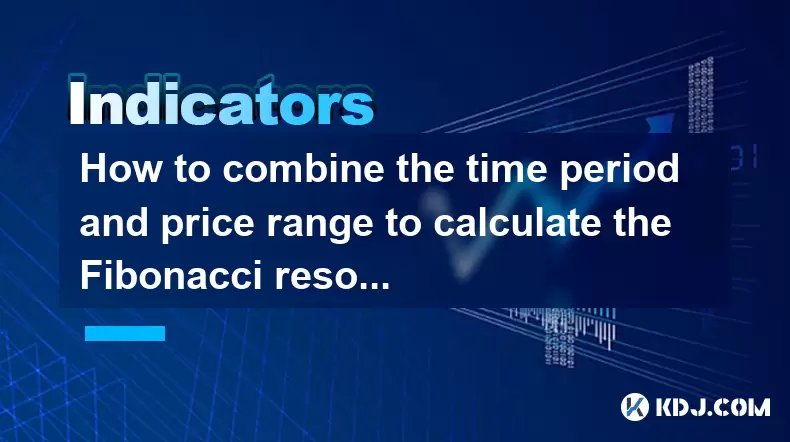
In the world of cryptocurrency, technical analysis plays a crucial role in helping traders make informed decisions. One popular tool used by many traders is the Fibonacci retracement, which helps identify potential support and resistance levels. However, a more advanced technique, known as the Fibonacci resonance point, combines the time period and price range to pinpoint even more accurate levels. This article will guide you through the process of calculating the Fibonacci resonance point, ensuring you have a comprehensive understanding of this powerful tool.
Understanding Fibonacci Retracement
Before diving into the Fibonacci resonance point, it's essential to have a solid grasp of the Fibonacci retracement. This tool is based on the Fibonacci sequence, a series of numbers where each number is the sum of the two preceding ones (0, 1, 1, 2, 3, 5, 8, 13, 21, and so on). In trading, the key Fibonacci ratios used are 23.6%, 38.2%, 50%, 61.8%, and 78.6%. These ratios help traders identify potential reversal points in a market trend.
To use Fibonacci retracement, you need to identify the highest and lowest points of a trend. Once these points are established, you can draw the Fibonacci levels on your chart, which will help you anticipate where the price might find support or resistance.
The Concept of Fibonacci Resonance
Fibonacci resonance takes the concept of Fibonacci retracement a step further by incorporating the time element. While traditional Fibonacci retracement focuses solely on price, resonance considers both price and time, making it a more comprehensive tool for traders.
The idea behind Fibonacci resonance is that certain time periods and price levels can resonate with each other, creating more significant support and resistance levels. By combining these two factors, traders can identify points where the market is more likely to react, increasing the accuracy of their predictions.
Calculating the Fibonacci Resonance Point
To calculate the Fibonacci resonance point, you need to follow a systematic approach that involves both price and time analysis. Here's how you can do it:
Identifying the Price Range
- Select the trend: Start by identifying a clear trend in the cryptocurrency market. This could be an uptrend or a downtrend.
- Determine the high and low points: Once the trend is identified, pinpoint the highest and lowest points within that trend. These points will serve as the basis for your Fibonacci retracement levels.
- Draw the Fibonacci levels: Using a charting tool, draw the Fibonacci retracement levels from the high to the low (for a downtrend) or from the low to the high (for an uptrend). The key levels to focus on are 23.6%, 38.2%, 50%, 61.8%, and 78.6%.
Analyzing the Time Period
- Identify the time frame: Choose a time frame that aligns with your trading strategy. This could be a daily, weekly, or monthly chart, depending on your preference.
- Calculate the time intervals: Measure the time between the high and low points identified in the price range. You can use a Fibonacci time tool to draw lines that correspond to the Fibonacci ratios (23.6%, 38.2%, 50%, 61.8%, and 78.6%) of the total time period.
Combining Price and Time
- Overlay the Fibonacci levels: Once you have the price and time Fibonacci levels, overlay them on your chart. The points where the price and time levels intersect are your Fibonacci resonance points.
- Identify the strongest resonance points: Look for areas where multiple Fibonacci levels converge. These areas are likely to be the most significant support and resistance levels, as they are reinforced by both price and time.
Applying Fibonacci Resonance in Trading
Now that you understand how to calculate the Fibonacci resonance point, let's explore how you can apply this tool in your cryptocurrency trading strategy.
Entry and Exit Points
- Entry points: Use the Fibonacci resonance points to identify potential entry points. If the price approaches a resonance point and shows signs of a reversal, it could be an opportune time to enter a trade.
- Exit points: Similarly, use the resonance points to determine when to exit a trade. If the price reaches a resonance point and shows signs of a potential reversal, it might be wise to take profits or cut losses.
Risk Management
- Setting stop-losses: Place your stop-loss orders just beyond the Fibonacci resonance points to minimize potential losses. This way, if the price moves against your position, you can exit the trade before incurring significant losses.
- Adjusting targets: Use the resonance points to set realistic profit targets. If the price reaches a resonance point and continues in your favor, you can adjust your targets to lock in profits.
Confirmation with Other Indicators
- Use additional indicators: While the Fibonacci resonance point is a powerful tool, it's always beneficial to use it in conjunction with other technical indicators. For example, you might look for confirmation from moving averages, RSI, or MACD to increase the reliability of your trading signals.
Practical Example of Fibonacci Resonance in Cryptocurrency Trading
To illustrate how the Fibonacci resonance point works in practice, let's consider a hypothetical scenario involving Bitcoin (BTC).
Scenario Setup
- Trend identification: Suppose we identify a downtrend in Bitcoin's price over the past six months.
- Price range: The highest point of the trend was $60,000, and the lowest point was $30,000.
- Time frame: We choose a weekly chart for our analysis.
Calculating Fibonacci Levels
- Price levels: Using the Fibonacci retracement tool, we draw levels from $60,000 to $30,000. The key levels are:
- 23.6% = $50,400
- 38.2% = $45,600
- 50% = $45,000
- 61.8% = $40,200
- 78.6% = $35,400
- Time intervals: The total time period between the high and low points is 26 weeks. Using the Fibonacci time tool, we calculate the following intervals:
- 23.6% = 6 weeks
- 38.2% = 10 weeks
- 50% = 13 weeks
- 61.8% = 16 weeks
- 78.6% = 20 weeks
Identifying Resonance Points
- Overlaying levels: We overlay the price and time Fibonacci levels on the chart. The points where the price and time levels intersect are our Fibonacci resonance points.
- Strongest resonance: We find that the 38.2% price level ($45,600) and the 50% time interval (13 weeks) intersect at a specific point on the chart. This intersection is a strong Fibonacci resonance point.
Trading Decision
- Entry and exit: If the price approaches the $45,600 level around 13 weeks after the low point and shows signs of a potential reversal, we might consider entering a long position. We would set our stop-loss just below the resonance point and adjust our profit targets based on other Fibonacci levels.
- Confirmation: We would also look for confirmation from other indicators, such as a bullish divergence on the RSI or a bullish crossover on the MACD, to increase the confidence in our trading decision.
Frequently Asked Questions
Q: Can the Fibonacci resonance point be used for all cryptocurrencies?
A: Yes, the Fibonacci resonance point can be applied to any cryptocurrency. However, the effectiveness may vary depending on the liquidity and volatility of the specific cryptocurrency you are trading.
Q: How often should I recalculate the Fibonacci resonance points?
A: It's advisable to recalculate the Fibonacci resonance points whenever there is a significant change in the market trend or when new high and low points are established. This ensures that your analysis remains relevant and accurate.
Q: Is the Fibonacci resonance point more effective than traditional Fibonacci retracement?
A: The Fibonacci resonance point can be more effective than traditional Fibonacci retracement because it incorporates both price and time, providing a more comprehensive view of potential support and resistance levels. However, it's essential to use it in conjunction with other technical analysis tools for the best results.
Q: Can the Fibonacci resonance point be used for long-term trading strategies?
A: Yes, the Fibonacci resonance point can be used for long-term trading strategies by adjusting the time frame and analyzing longer-term trends. This allows traders to identify significant support and resistance levels over extended periods.
Disclaimer:info@kdj.com
The information provided is not trading advice. kdj.com does not assume any responsibility for any investments made based on the information provided in this article. Cryptocurrencies are highly volatile and it is highly recommended that you invest with caution after thorough research!
If you believe that the content used on this website infringes your copyright, please contact us immediately (info@kdj.com) and we will delete it promptly.
- Cryptocurrencies, Coingecko, and Trending Tokens: What's Hot Now?
- 2025-06-23 23:05:12
- Bitcoin, Meerkat, and Onchain Engagement: A New Era of Crypto
- 2025-06-23 23:25:12
- Cloud Mining, Bitcoin, and XRP: A 2025 Perspective
- 2025-06-23 23:25:12
- Neo Pepe Coin: Meme Crypto with Explosive Potential?
- 2025-06-23 23:45:12
- FUNToken: Decoding Past Trends and Getting Started in the Gaming Crypto Sphere
- 2025-06-23 22:25:12
- Eyenovia Goes Crypto: A HYPE Treasury and Potential Rebrand
- 2025-06-23 23:45:12
Related knowledge

Is it contradictory that the moving average system is arranged in a bullish pattern but the DMI shows a decline in trend strength?
Jun 23,2025 at 11:43pm
Understanding the Moving Average and DMI RelationshipIn cryptocurrency trading, technical analysis plays a crucial role in identifying potential trends and making informed decisions. Two of the most commonly used indicators are the Moving Average (MA) and the Directional Movement Index (DMI). While both tools aim to provide insight into market direction...

What is the significance of the gap formed by the gap opening not being filled within five days?
Jun 23,2025 at 09:42pm
Understanding Gaps in Cryptocurrency TradingIn the world of cryptocurrency trading, a gap refers to a situation where the price of an asset jumps from one level to another without any trading activity occurring between those two levels. This often happens over weekends or holidays when the market is closed, and significant news or events occur that impa...
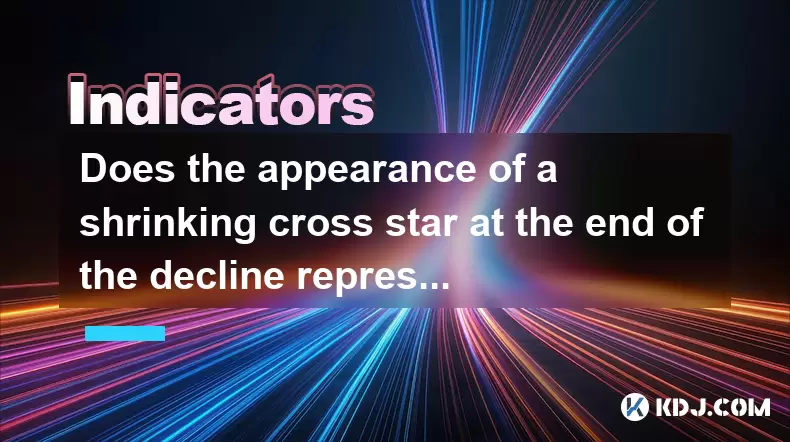
Does the appearance of a shrinking cross star at the end of the decline represent a signal to stop the decline?
Jun 24,2025 at 12:14am
Understanding the Shrinking Cross Star PatternIn the world of cryptocurrency trading, candlestick patterns play a crucial role in technical analysis. One such pattern is the shrinking cross star, which often appears at the end of a downtrend. This pattern consists of a candle with a small body, typically appearing after a series of bearish candles, and ...
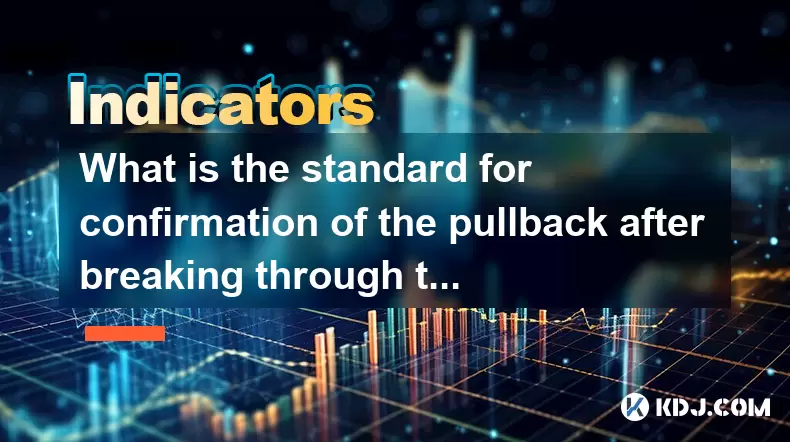
What is the standard for confirmation of the pullback after breaking through the neckline with large volume?
Jun 23,2025 at 11:28pm
Understanding the Neckline in Technical AnalysisIn technical analysis, the neckline is a critical support or resistance level that appears in chart patterns such as head and shoulders, double tops, and double bottoms. It typically connects two or more lows (in the case of a head and shoulders top) or highs (in the case of a head and shoulders bottom). W...
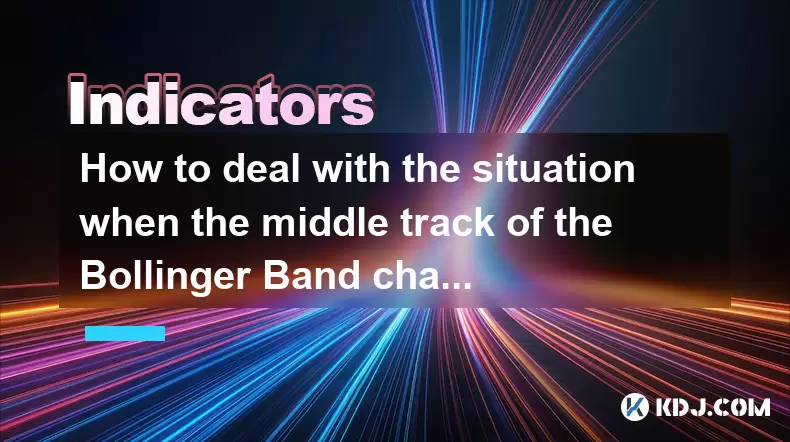
How to deal with the situation when the middle track of the Bollinger Band changes from support to resistance?
Jun 23,2025 at 11:22pm
Understanding the Bollinger Band Middle TrackThe Bollinger Band is a widely used technical indicator in cryptocurrency trading. It consists of three lines: the upper band, the lower band, and the middle track, which is typically a 20-period simple moving average (SMA). Traders often rely on the middle track as a dynamic support or resistance level. Howe...
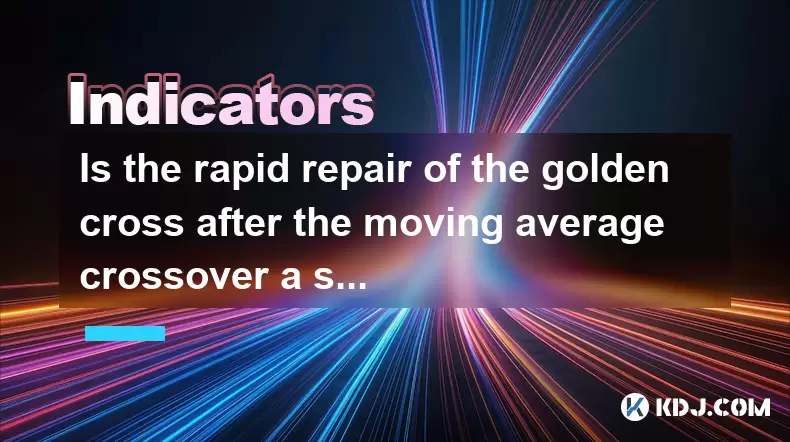
Is the rapid repair of the golden cross after the moving average crossover a signal of inducing short selling?
Jun 24,2025 at 12:01am
Understanding Moving Averages and Their Role in Technical AnalysisIn the realm of technical analysis, moving averages (MAs) are among the most widely used tools by traders to identify trends and potential reversals. These indicators smooth out price data over a specific time period, offering a clearer view of market direction. The two most common types ...

Is it contradictory that the moving average system is arranged in a bullish pattern but the DMI shows a decline in trend strength?
Jun 23,2025 at 11:43pm
Understanding the Moving Average and DMI RelationshipIn cryptocurrency trading, technical analysis plays a crucial role in identifying potential trends and making informed decisions. Two of the most commonly used indicators are the Moving Average (MA) and the Directional Movement Index (DMI). While both tools aim to provide insight into market direction...

What is the significance of the gap formed by the gap opening not being filled within five days?
Jun 23,2025 at 09:42pm
Understanding Gaps in Cryptocurrency TradingIn the world of cryptocurrency trading, a gap refers to a situation where the price of an asset jumps from one level to another without any trading activity occurring between those two levels. This often happens over weekends or holidays when the market is closed, and significant news or events occur that impa...

Does the appearance of a shrinking cross star at the end of the decline represent a signal to stop the decline?
Jun 24,2025 at 12:14am
Understanding the Shrinking Cross Star PatternIn the world of cryptocurrency trading, candlestick patterns play a crucial role in technical analysis. One such pattern is the shrinking cross star, which often appears at the end of a downtrend. This pattern consists of a candle with a small body, typically appearing after a series of bearish candles, and ...

What is the standard for confirmation of the pullback after breaking through the neckline with large volume?
Jun 23,2025 at 11:28pm
Understanding the Neckline in Technical AnalysisIn technical analysis, the neckline is a critical support or resistance level that appears in chart patterns such as head and shoulders, double tops, and double bottoms. It typically connects two or more lows (in the case of a head and shoulders top) or highs (in the case of a head and shoulders bottom). W...

How to deal with the situation when the middle track of the Bollinger Band changes from support to resistance?
Jun 23,2025 at 11:22pm
Understanding the Bollinger Band Middle TrackThe Bollinger Band is a widely used technical indicator in cryptocurrency trading. It consists of three lines: the upper band, the lower band, and the middle track, which is typically a 20-period simple moving average (SMA). Traders often rely on the middle track as a dynamic support or resistance level. Howe...

Is the rapid repair of the golden cross after the moving average crossover a signal of inducing short selling?
Jun 24,2025 at 12:01am
Understanding Moving Averages and Their Role in Technical AnalysisIn the realm of technical analysis, moving averages (MAs) are among the most widely used tools by traders to identify trends and potential reversals. These indicators smooth out price data over a specific time period, offering a clearer view of market direction. The two most common types ...
See all articles
























































































